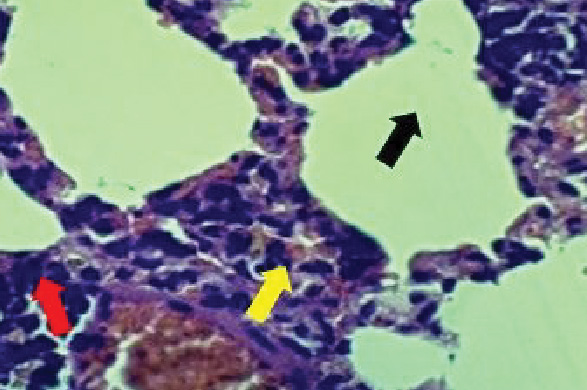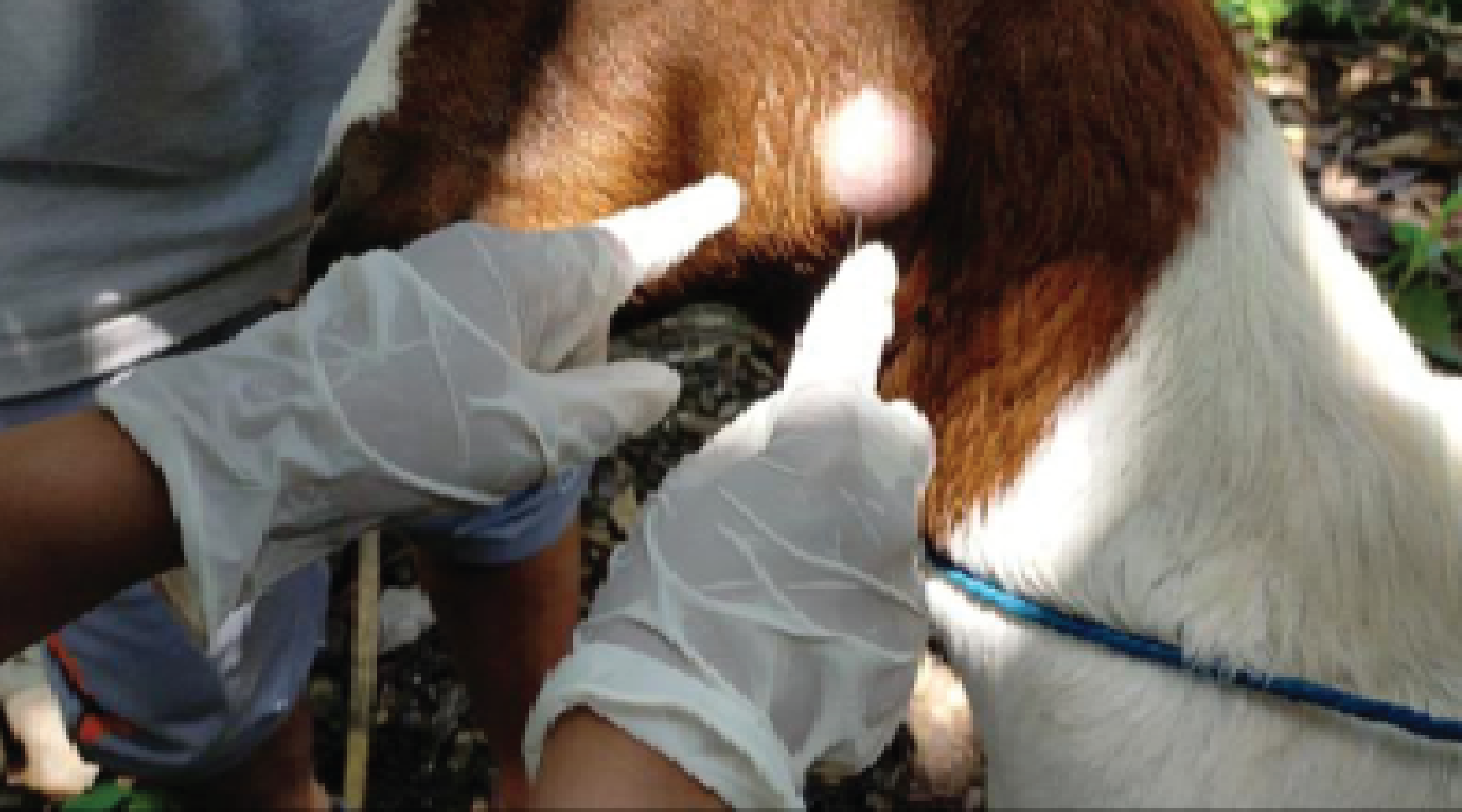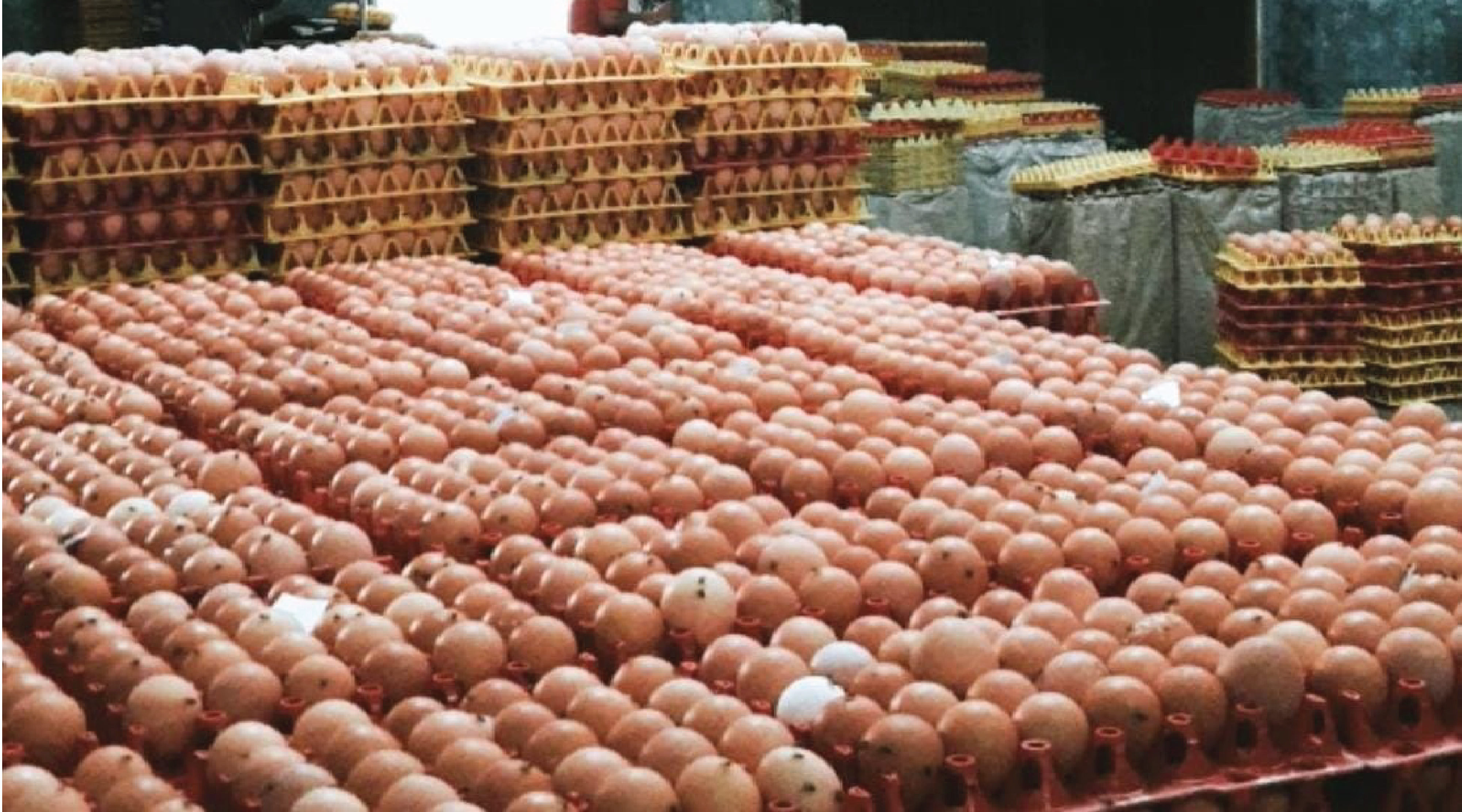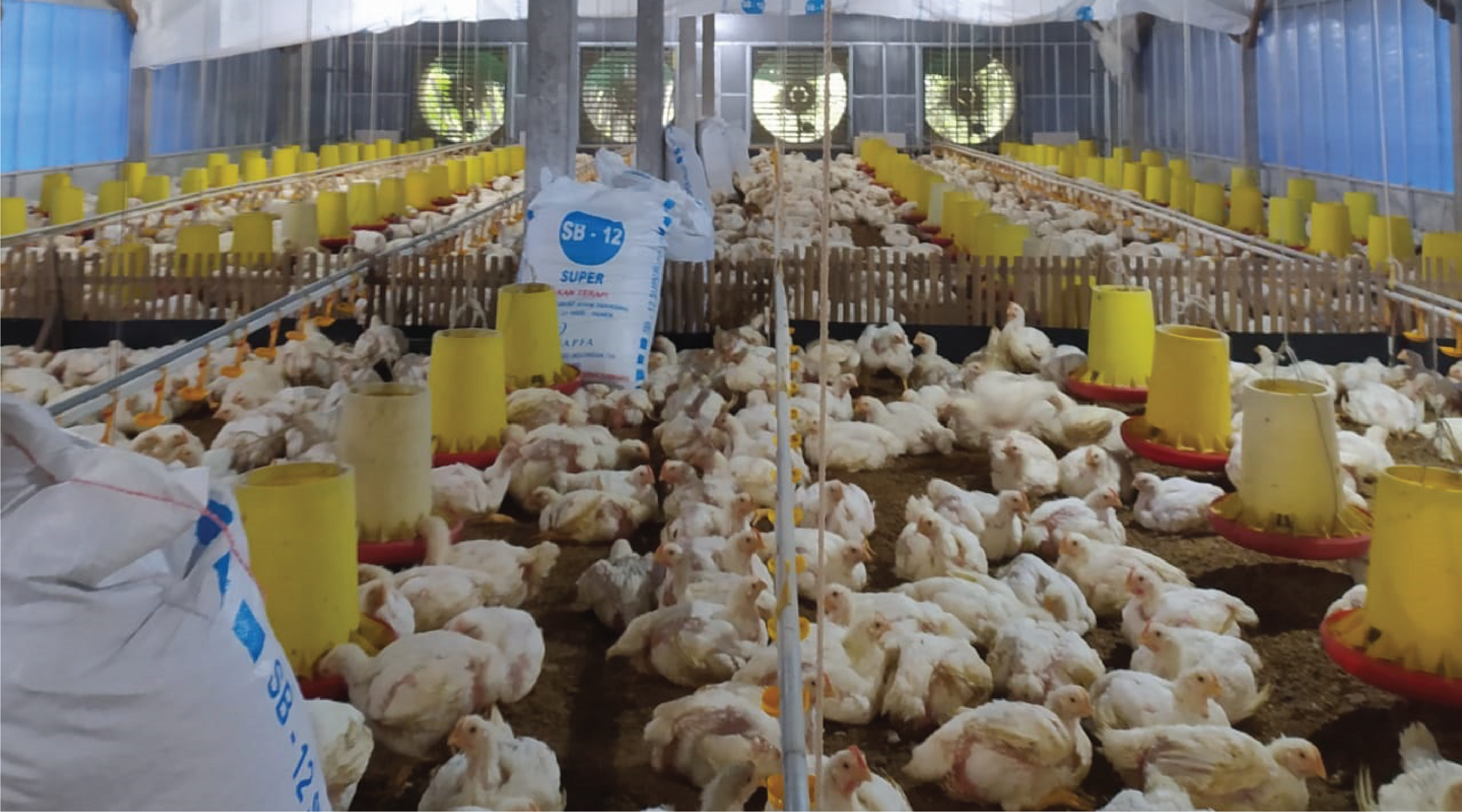The Effectiveness of Basil Leaves Extract (Ocimum basilicum L.) on Histopathological Features of The Lung Rattus Norvegicus Exposure to Mosquito Coil Smoke

Downloads
Background: Mosquito coil smoke is one of the exogenous free radicals. Exposure to mosquito coil smoke is associated with lung inflammation, oxidative stress and lipid peroxidation. Compounds that can inhibit the oxidation reaction by binding free radicals are known as antioxidants. Purpose: This study aims to determine the effectiveness of basil leaf extract (Ocimum basilicum L.) as an antioxidant on damage to the histological structure of the lung of white rats (Rattus norvegicus) exposed to mosquito coil smoke. Method: Rats were divided into five groups; group without treatment as negative control C(-) was given 0.5% CMC Na, group as positive control C(+) was given 0.5% CMC Na before mosquito coil smoke exposure, and three groups that treated with 150 T(1), 300 T(2), and 600mg/kgBW T(3) of basil leaves extract before mosquito coil smoke exposure. Exposure to mosquito coil smoke was given for 8 hours a day for 52 days. All rats were terminated after 52 days of treatment; the histopathology of the lungs was observed under the microscope at 400× magnification within five visual different fields. The analysis was done by observing the severity. Statistical analysis in this study used Kruskal-Wallis and Mann-Whitney test. Results: The result showed that the control group and treatment group had significantly different lung damage (p<0.05). Conclusion: All doses of basil leaf extract reduce lung damage in infiltration of inflammation of cells, thickening of alveolar wall, and enlarge alveolar in rats. The effective dose of basil leaf extract is 600 mg/kgBW in reducing the lung damage.
Dahniar, A.R., 2011. Pengaruh Asap Obat Nyamuk Terhadap Kesehatan dan Struktur Histologi Sistem Pernafasan. Jurnal kedokteran syiah Kuala, 11(1), 52-59.
Erviana, L., Malik, A., and Najib, A., 2016. Uji Aktivitas Antiradikal Bebas Ekstrak Etanol Daun Kemangi (Ocimum basilicum L.) Dengan Menggunakan Metode DPPH. Jurnal Fitofarmaka Indonesia, 3(2), 164-168.
Fitria, F., Triandhini, R.R., Mangimbulude, J.C., and Karwur, F.F., 2013. Merokok dan oksidasi DNA. Sains Medika, 5(2), 113-120.
Hansel, T.T., and Barnes, P.J., 2004. An Atlas of Chronic Obstructive Pulmonary Disease. CRC Press.
Hendra, R., Ahmad, S., Sukari, A., Shukor, M.Y., and Oskoueian, E., 2011. Flavonoid Analyses and Antimicrobial Activity of Various Parts of Phaleria macrocarpa (Scheff.) Boerl fruit. International Journal of Molecular Sciences, 12(6), 3422-3431.
Heryanto, E., 2019. Faktor Resiko Infeksi Saluran Pernapasan Akut (ISPA) Pada Balita Terhadap Paparan Polusi Udara Dalam Rumah. Cendekia Medika: Jurnal Stikes Al-Maarif Baturaja, 4(2), 79-87
Kumalasari, M.L.F., and Andiarna, F., 2020. Uji Fitokimia Ekstrak Etanol Daun Kemangi (Ocimum basilicum L). Indonesian Journal for Health Sciences, 4(1), 39-44.
Lazuardi, M., 2019. Bagian Khusus Ilmu Farmasi Veteriner. Airlangga University Press (AUP). Surabaya.
Lestari, N., 2018. Formulasi Gel Antioksidan Minyak Atsiri Daun Kemangi (Ocimum Citriodorum Vis).[Skripsi]. Universitas Islam Indonesia. Yogyakarta.
Mahidin, M., Maulana, A.M., and Susiyadi, S., 2018. Pengaruh Pemberian Ekstrak Etanol Daun Kemangi (Ocimum basilicum l.) Terhadap Jumlah Sel Spermatogenik Tikus Putih (rattus norvegicus) Galur Wistar Jantan yang Diinduksi Monosodium Glutamat. Herb-Medicine Journal: Terbitan Berkala Ilmiah Herbal, Kedokteran dan Kesehatan, 1(1), 19-30.
Metcalf, B.J., Gertz, R.E., Jr, Gladstone, R.A., Walker, H., Sherwood, L.K., Jackson, D., Li, Z., Law, C., Hawkins, P. A., Chochua, S., Sheth, M., Rayamajhi, N., Bentley, S. D., Kim, L., Whitney, C. G., McGee, L., Beall, B., and Active Bacterial Core surveillance team., 2016. Strain Features and Distributions In Pneumococci From Children With Invasive Disease Before and After 13-Valent Conjugate Vaccine Implementation In The USA. Clinical Microbiology and Infection, 22(1), 60-69.
Purnama, T. E., and Fikri, F., 2020. Pengaruh Paparan Uap Rokok Elektrik Terhadap Gambaran Histopatologi Organ Pulmo Tikus Putih (Rattus norvegicus). Jurnal Medik Veteriner, 3(1), 38-44.
Qureshi, S.T., Channar, A.P., and Soomro, A.N., 2024. Phytogenotoxicity Assessment Of Mosquito Repellent Coils Used In Pakistan Via Plant Chromosomal Aberration Assay. Pakistan Journal of Biotechnology, 21(2), 345-354.
Rianti, E.D.D., 2017. Mekanisme Paparan Obat Anti Nyamuk Elektrik dan Obat Anti Nyamuk Bakar terhadap Gambaran Paru Tikus. INOVASI, XIX, 58–68.
Rianti, E.D.D., Soekanto, A., and Sahadewa, S., 2017. Jus Buah Naga Sebagai Antioksidan pada Tikus Putih (Rattusnovergicus) yang Dipapar Obat Anti Nyamuk Bakar Terhadap Perubahan Histopatologi Sel Nephron. JIPE, 3(3), 235-249.
Tazuyyun, S.H., 2020. Pengaruh Pemberian Ekstrak Etanol Daun Kemangi (Ocimum citriodorum) Terhadap Kadar Superoksida Dismutase (SOD) Paru Tikus Wistar Setelah Paparan Asap Rokok. [Disertasi]. Universitas Islam Negeri Maulana Malik Ibrahim. Malang
Tohomi, K.L., Iswahyudi, I., and Wahdaningsih, S., 2014. Aktivitas Antioksidan Ekstrak Etanol Daun Buas-Buas (Premna cordifolia Linn.) Terhadap Gambaran Histopatologi Paru Tikus (Rattus norvegicus) Wistar Jantan Pasca Paparan Asap Rokok. Journal of Tropical Pharmacy and Chemistry, 2(4), 212-224.
Vinoth, K., Mani, V.M., and Ali, A.L., 2016. Protective Effect of Pomegranate Peel Extract on Mosquito Coil Smoke Exposed Alveolar Damage in Male Wistar Rats. International Journal of Science and Humanities, 2, 417-430.
Wei, K., Li, Y., Du, B., and Wu, J., 2024. Differences in Airway Remodeling and Emphysematous Lesions between Rats Exposed to Smoke from New-Type and Conventional Tobacco Varieties. Antioxidants, 13(5), 511.
Werdhasari, A., 2014. Peran Antioksidan Bagi Kesehatan. Jurnal Biotek Medisiana Indonesia, 3(2), 59-68.
Copyright (c) 2025 Authors

This work is licensed under a Creative Commons Attribution-ShareAlike 4.0 International License.
- The journal allows the author to hold the copyright of the article without restrictions.
- The journal allows the author(s) to retain publishing rights without restrictions.
- The legal formal aspect of journal publication accessibility refers to Creative Commons Attribution Share-Alike (CC BY-SA).

Journal of Applied Veterinary Science and Technology is licensed under a Creative Commons Attribution-ShareAlike 4.0 International License





























